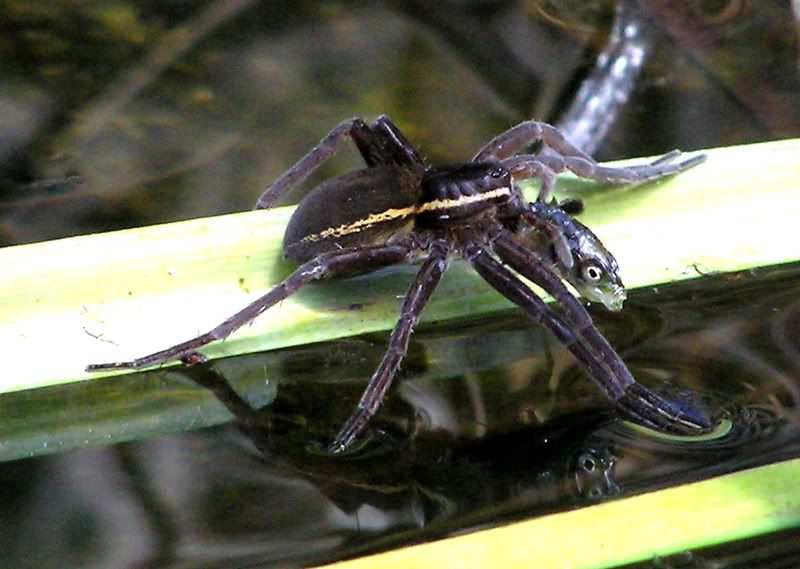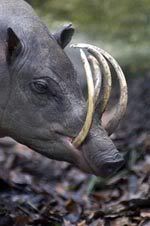 |
| Image by Helen Smith. Yeah, I think it’s pretty too. But look how surprised that fish is! |
These spiders are found throughout in wetlands throughout Europe, with a fairly spotty distribution. They do not build webs to hunt, preferring to wait on a stem with their front legs touching the water’s surface. When they feel a vibration, BAM! Dinner is served. Main courses typically include aquatic insects, water striders, and less frequently, fish, like our surprised friend shown above.
The water also comes in handy when a male Fen Raft Spider wants to woo the ladies. Courtship involves drumming the water until the couple meets, when they both begin to bob slowly to each other. Mating is quick, likely because it is not unheard of for the male to become a protein source. After laying the eggs, the female carries the egg sac under her fangs for about three weeks. After hatching, the young spend a week growing up in a web-nest that’s constructed and guarded by mom.
It seems that wetlands are disappearing everywhere, and therefore, so are the Fen Raft Spiders. The remaining wetlands are getting more and more pollution problems, and all evidence suggests that these spiders require clean water. There’s certainly hope though. Britain has pulled out all the stops trying to protect their two populations from dying out, and frankly, it seems to be working.
1Here’s a challenge for you readers: can somebody find me an endangered whipscorpion? That would be cool.
2These are not spiders.


